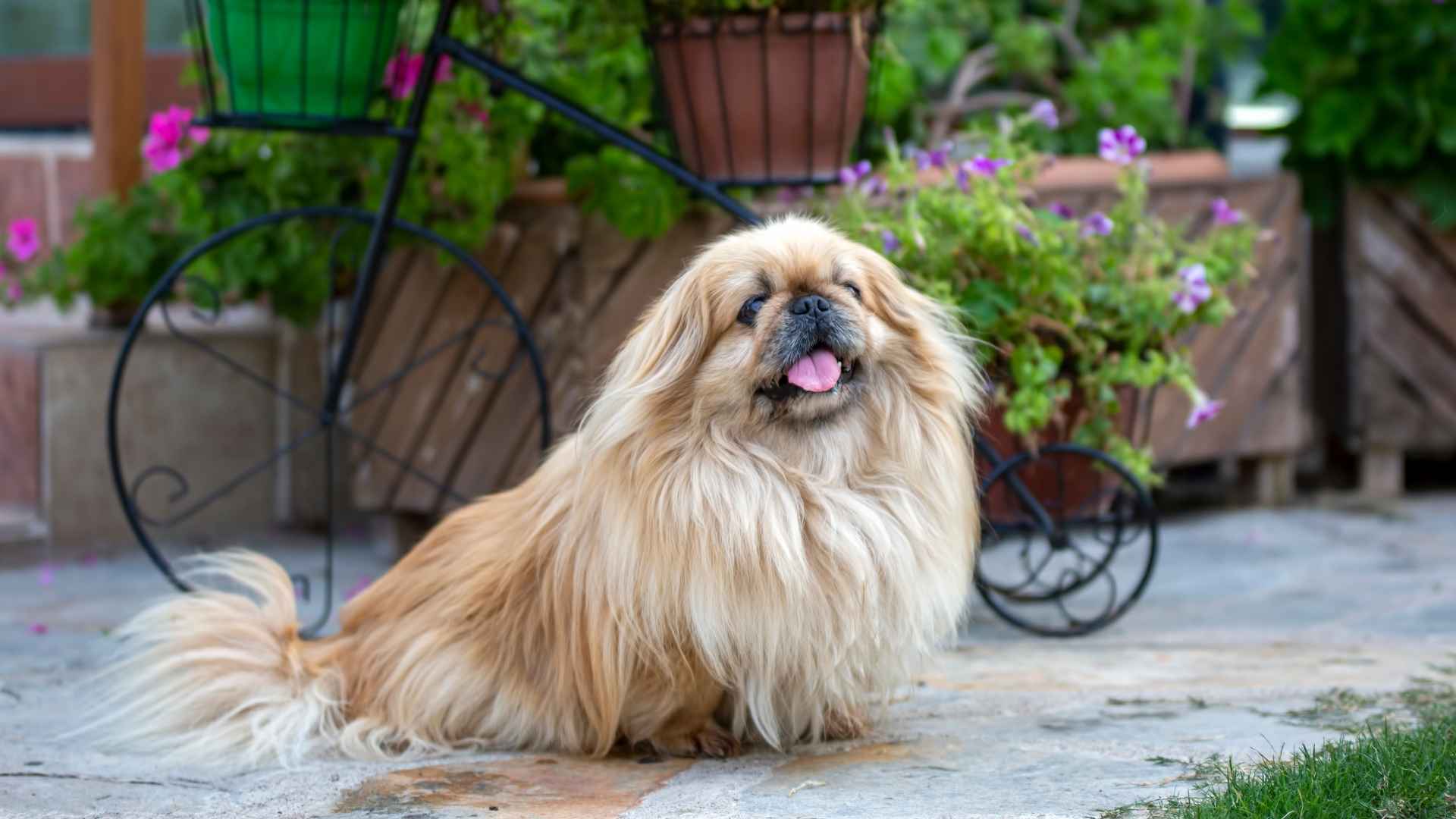Flat-faced dog breeds, medically referred to as brachycephalic dogs, are renowned for their distinctive appearance. They are characterized by short snouts, prominent eyes, and expressive faces. These breeds have become increasingly popular companions.
However, their unique facial structure is not merely a cosmetic trait; it has significant health implications. According to the American Kennel Club (AKC), brachycephalic breeds often face challenges such as breathing difficulties, overheating, and dental issues due to their shortened skulls and compressed nasal passages.
Understanding these health concerns is crucial for current and prospective owners. In this article, we’ll explore seven popular flat-faced dog breeds, learning their characteristics, health considerations, and care requirements to ensure they lead happy, healthy lives.
Most Well-Known Flat-Faced Dog Breeds
From affectionate lapdogs to sturdy companions, these flat-faced breeds charm with their appearance and personalities. Let’s explore seven brachycephalic dogs that require extra care but give plenty in return.
1. Pugs
Pugs are among the most recognized flat faced dog breeds with their scrunched noses, wide eyes, and loving nature. These cheerful little dogs were originally bred to be companions, making them perfect pets for everyone, from city-dwelling singles to suburban families.
Health Issues
According to PetMD, Pugs often suffer from brachycephalic obstructive airway syndrome (BOAS), including stenotic nares and elongated soft palates, which lead to noisy breathing, overheating, and fatigue. Their prominent eyes also make them vulnerable to injuries and ulcers, while skin folds can harbor infections.
Care Needs
Due to their compact airways, Pugs need gentle walks, cool environments, and regular vet checkups. Their wrinkles should be cleaned routinely to prevent irritation, and weight must be managed to avoid stress on their respiratory system.
2. Shih Tzu
The Shih Tzu, meaning “lion dog,” is a small, affectionate breed with origins tracing back to ancient Tibet. Bred primarily as a companion for Chinese royalty, these dogs are known for their long, flowing coats and friendly disposition. Their compact size and sociable nature make them ideal pets for families and individuals alike.
Health Issues
According to PDSA, Shih Tzus possess a shortened skull shape, leading to potential respiratory challenges. Their prominent eyes make them prone to ocular issues such as corneal ulcers and dry eye. Dental overcrowding is another concern due to their compact jaw structure. Regular veterinary check-ups are essential to monitor and manage these health aspects.
Care Needs
Shih Tzus require daily grooming to maintain their luxurious coats, preventing tangles and mats. Regular brushing and periodic professional grooming sessions are recommended.
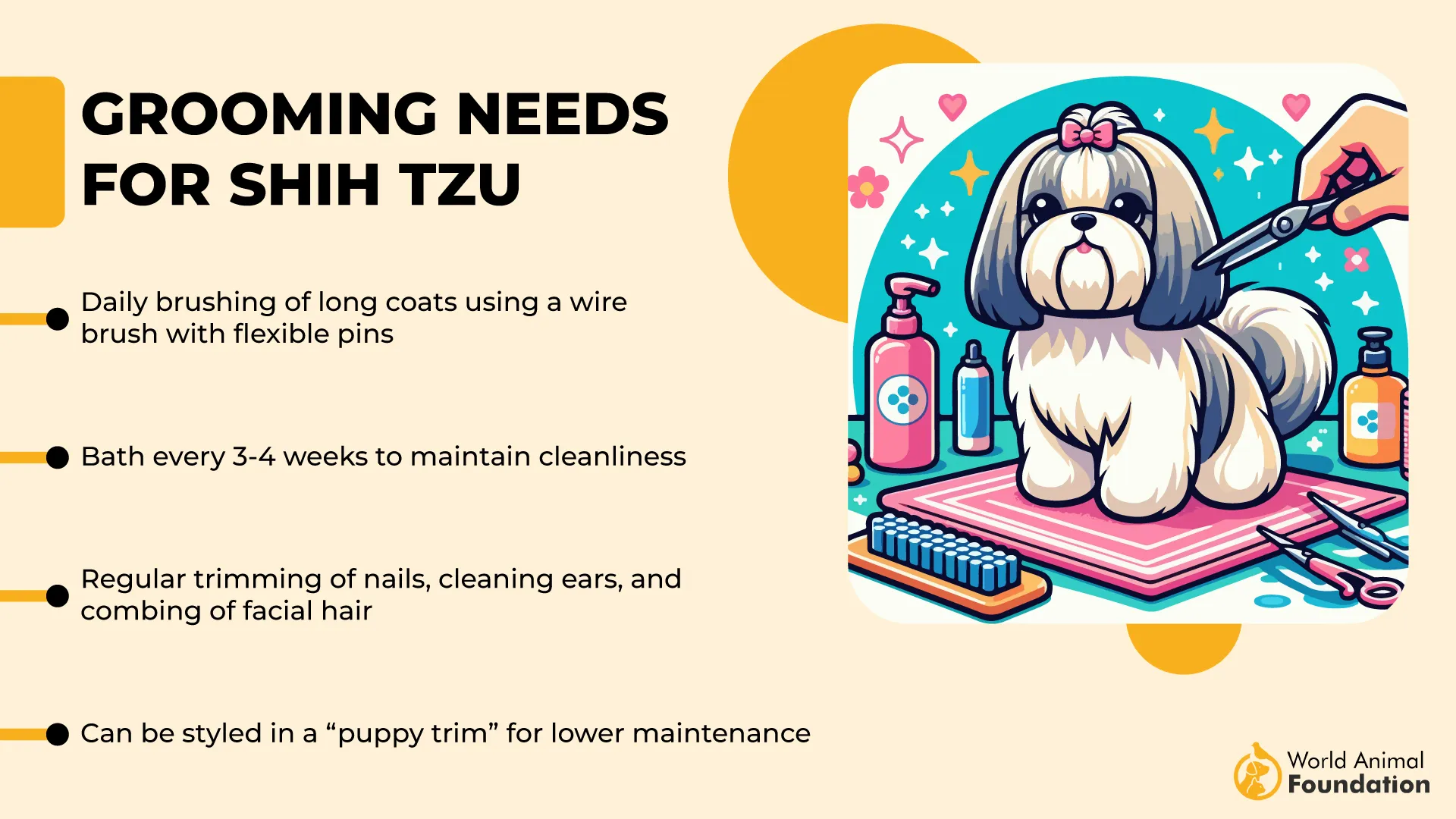
Due to their brachycephalic nature, it’s crucial to avoid strenuous exercise and ensure they remain in cool environments during warmer months. A balanced diet and routine dental care will further support their overall well-being.
3. Pekingese
The Pekingese is a toy-sized breed with ancient Chinese origins, once treasured by royalty for its lion-like appearance and bold spirit. They make calm and loyal lapdogs with their compact build, long coat, and flat face. While affectionate with their owners, they can be reserved around strangers and may not tolerate rough play from young children.
Health Issues
Pekingese are a brachycephalic breed, meaning they often experience breathing difficulties and overheating due to their shortened muzzle. Their prominent eyes are prone to corneal ulcers and dry eye, while their long backs make them vulnerable to spinal issues like IVDD.
Care Needs
Their double coat needs weekly brushing and occasional baths. Avoid strenuous activity in hot weather. Keep their facial folds clean to prevent infection and schedule regular vet checkups to monitor heart health and weight.
4. Brussels Griffon

Brussels Griffons are toy-sized dogs with striking, human-like expressions and lively personalities. Originally bred as vermin hunters in Belgium, they are now known for their affectionate, Velcro-dog tendencies.
They weigh between 6 to 12 pounds. Their expressive faces, large eyes, and either rough or smooth coats make them stand out. These small dogs thrive in indoor environments and bond closely with their humans.
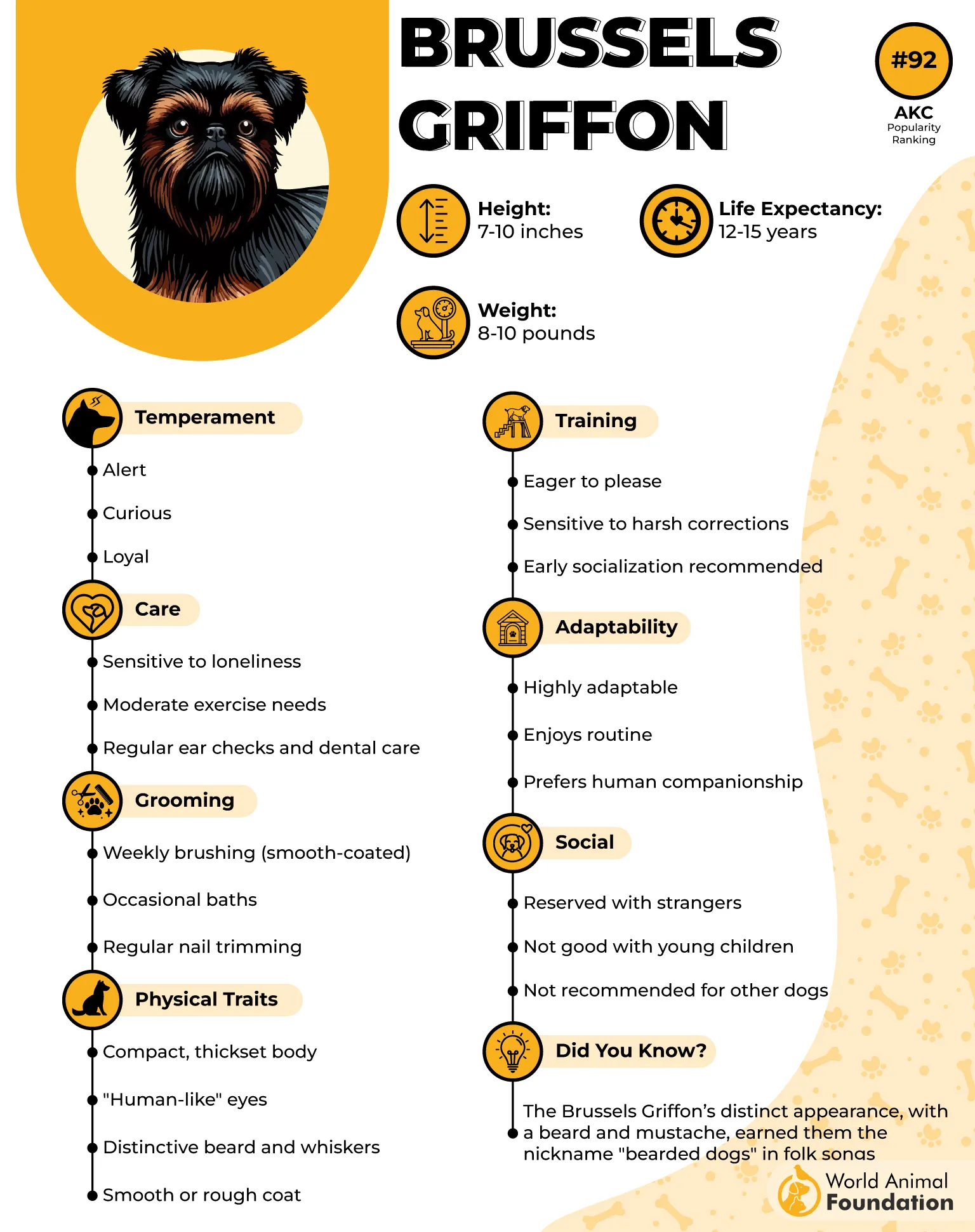
Health Issues
Due to their compact build and short muzzles, Brussels Griffons may experience breathing sensitivity in hot weather, but generally have fewer respiratory issues than other flat-faced breeds. They are more commonly affected by eye injuries, hip dysplasia, and patellar luxation. A rare but serious neurological issue called syringomyelia may also occur in some lines.
Care Needs
Griffons need regular grooming depending on coat type, gentle training, daily indoor companionship, and consistent dental care to avoid overcrowding-related issues.
5. Japanese Chin
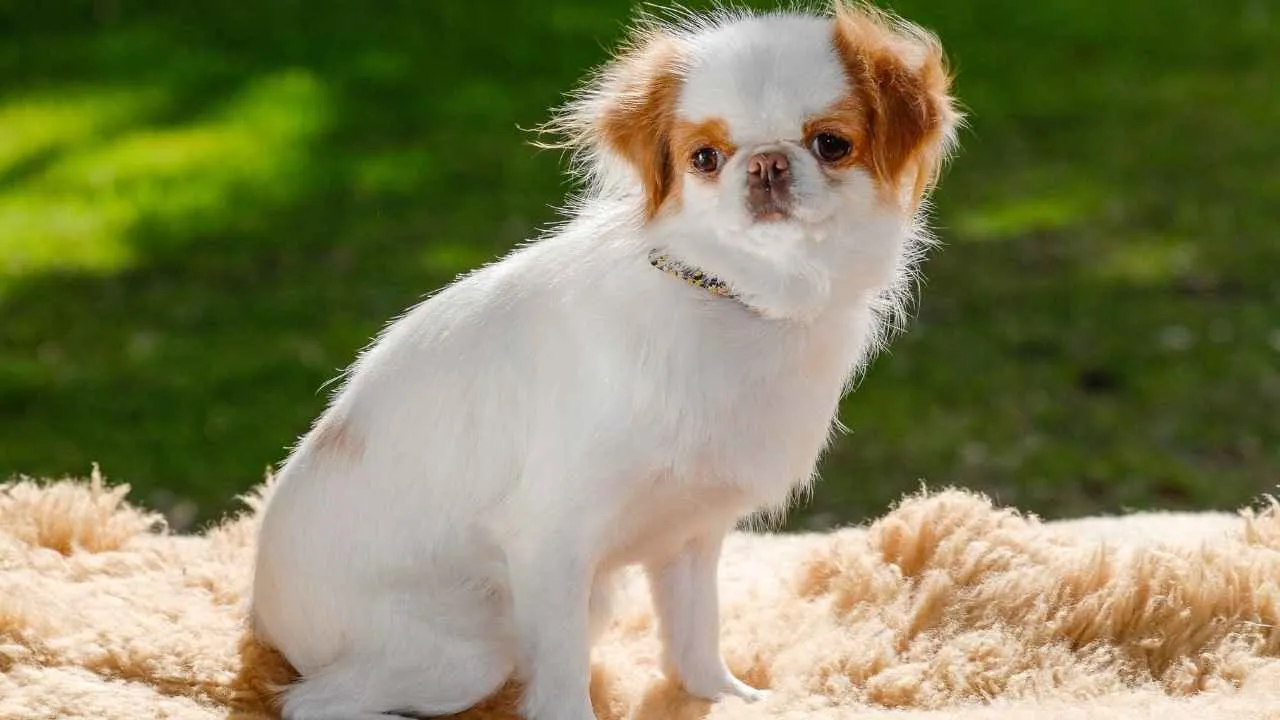
The Japanese Chin is a dainty, affectionate toy breed often described as feline in behavior, climbing high surfaces, and grooming themselves with care. With their silky coat, broad head, and widely spaced, expressive eyes, they were long favored by royalty in Asia.
They make devoted indoor companions who thrive on human interaction and gentle affection, standing around 8 to 11 inches tall and weighing under 11 pounds.
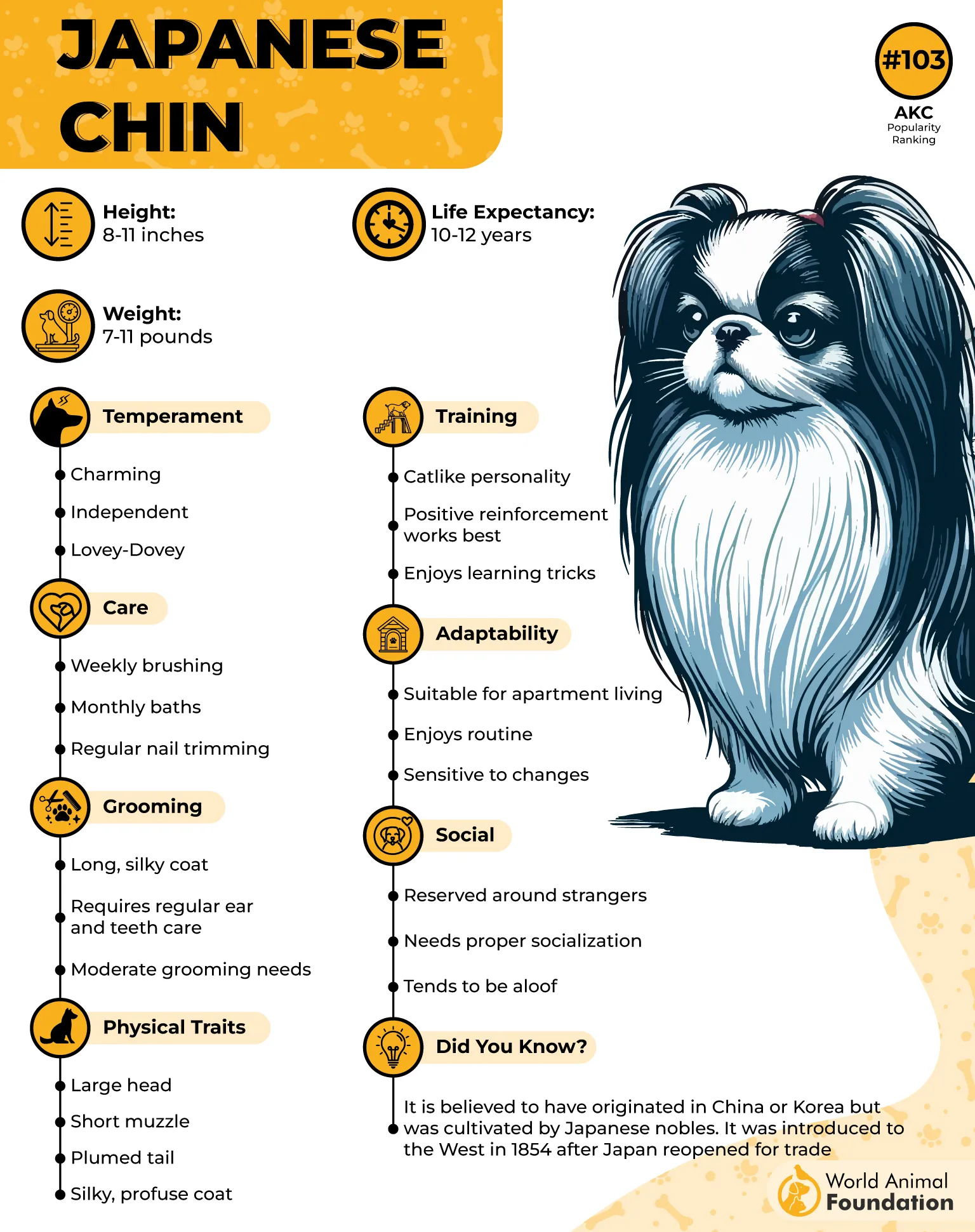
Health Issues
Japanese Chins are brachycephalic, which makes them prone to airway obstruction, snoring, and heat sensitivity. They are also at risk for eye problems such as cataracts, entropion, and distichiasis, along with patellar luxation and myxomatous mitral valve disease. A severe inherited disorder, GM2 gangliosidosis, affects the nervous system and is fatal without genetic screening.
Care Needs
Weekly brushing, mindful temperature regulation, and short walks keep this elegant breed in top shape. Their small size demands gentle handling, regular eye and dental care, and a consistent feeding schedule.
6. English Bulldogs
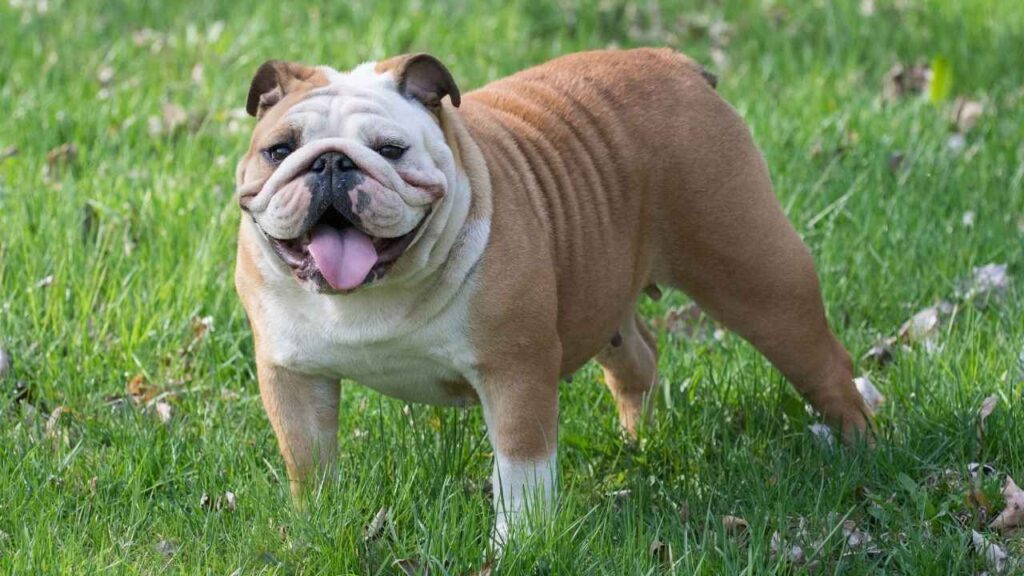
The English Bulldog is a broad, stocky dog known for its loose skin, signature wrinkles, and calm demeanor. They are 14 to 15 inches tall and weigh up to 50 pounds. It’s heavier than many other flat-faced breeds, but it is still well-suited to apartment life due to its low energy levels and love for lounging near its people. Despite their intimidating appearance, English Bulldogs are famously affectionate and loyal.
Health Issues
As a brachycephalic breed, English Bulldogs are highly heat-sensitive and often face breathing challenges. They may snore, wheeze, or experience difficulty during exercise or warm weather. Common health concerns include skin fold infections, hip dysplasia, entropion, and obesity, all of which can affect quality of life if not properly managed. Routine vet care is crucial.
Care Needs
This breed benefits from short daily walks to manage weight, along with regular cleaning of facial folds to avoid irritation. Their stubborn streak can complicate training, but with patience and affection, they make gentle and devoted companions.
7. Boston Terrier
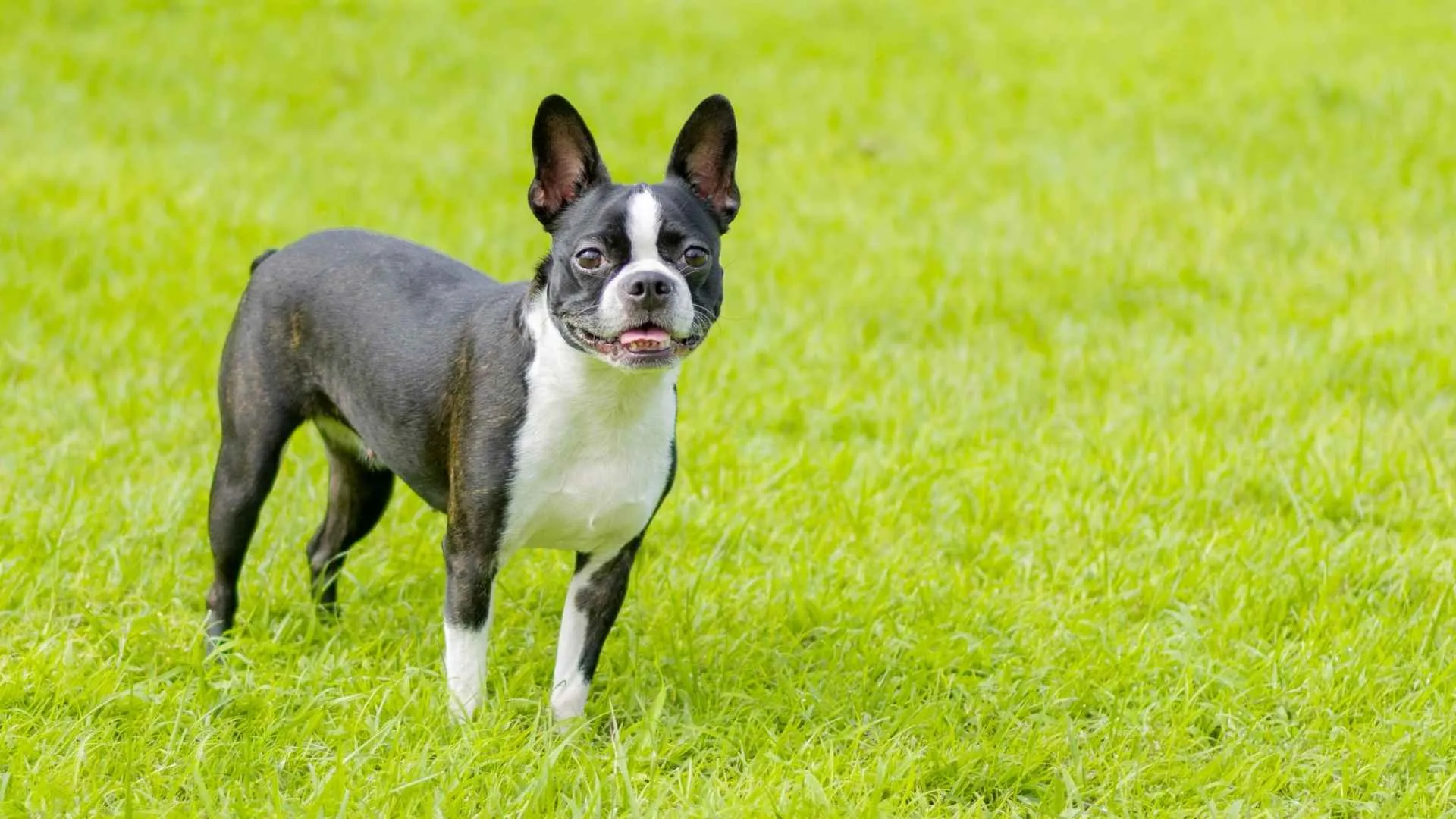
The Boston Terrier is a lively and affectionate small dog known for its tuxedo-like coat and big, expressive eyes. Originating in Boston, Massachusetts, this breed was developed from crosses between English Terriers and Bulldogs.
They typically weigh between 7 to 11 kilograms and stand 38 to 43 centimeters tall. Despite their compact size, Boston Terriers are energetic, social, and well-suited for families with children or apartment dwellers looking for an engaging companion.
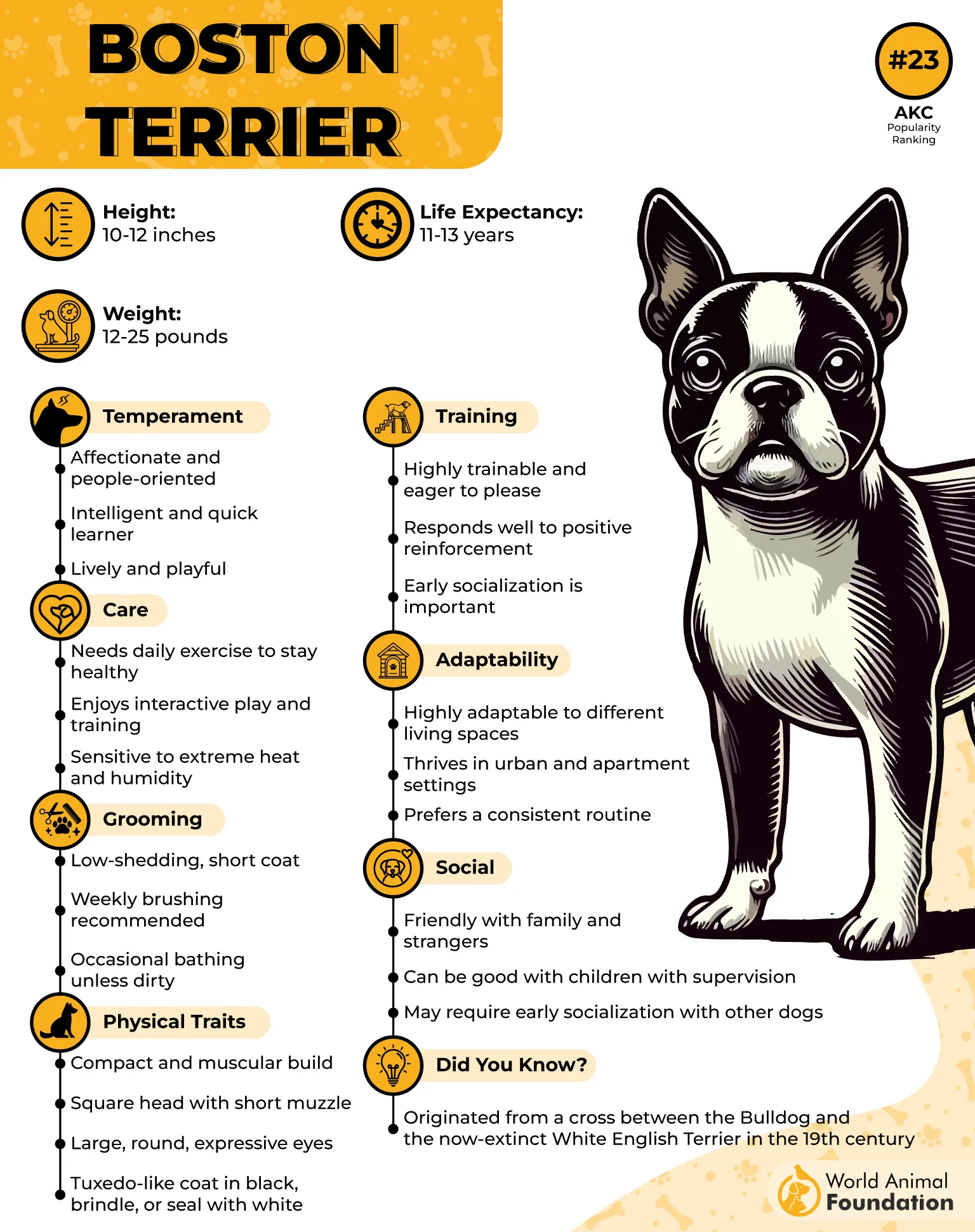
Health Issues
As a brachycephalic breed, Boston Terriers are prone to breathing difficulties, snoring, and heat intolerance. Their prominent eyes make them susceptible to conditions like cherry eye, dry eye, and cataracts.
They may also develop patellar luxation, hemivertebrae, or skin allergies, and some experience Cushing’s syndrome. Cesarean delivery is often required due to their physical build. Responsible breeding and regular health screenings are vital to reducing inherited conditions.
Care Needs
Boston Terriers require about an hour of daily activity and thrive on interactive play. They respond well to reward-based training and need weekly brushing to maintain their short coat. Avoid strenuous exercise in hot weather due to breathing sensitivity. Regular vet visits, a balanced diet, and consistent grooming routines support a healthy, happy life.
Conclusion
Flat faced dog breeds captivate with their charm, loyalty, and unique looks but beneath those adorable wrinkles lie real health considerations that require careful attention. These brachycephalic dogs are beloved family companions, yet they often face breathing difficulties, eye conditions, and heat sensitivity due to their facial structure.
Responsible ownership means understanding these risks, choosing reputable breeders, and maintaining a proactive approach to veterinary care, grooming, and lifestyle. With the right care, these breeds can live comfortably and form deeply rewarding bonds with their humans, proving that a little extra care brings a whole lot of love in return.


